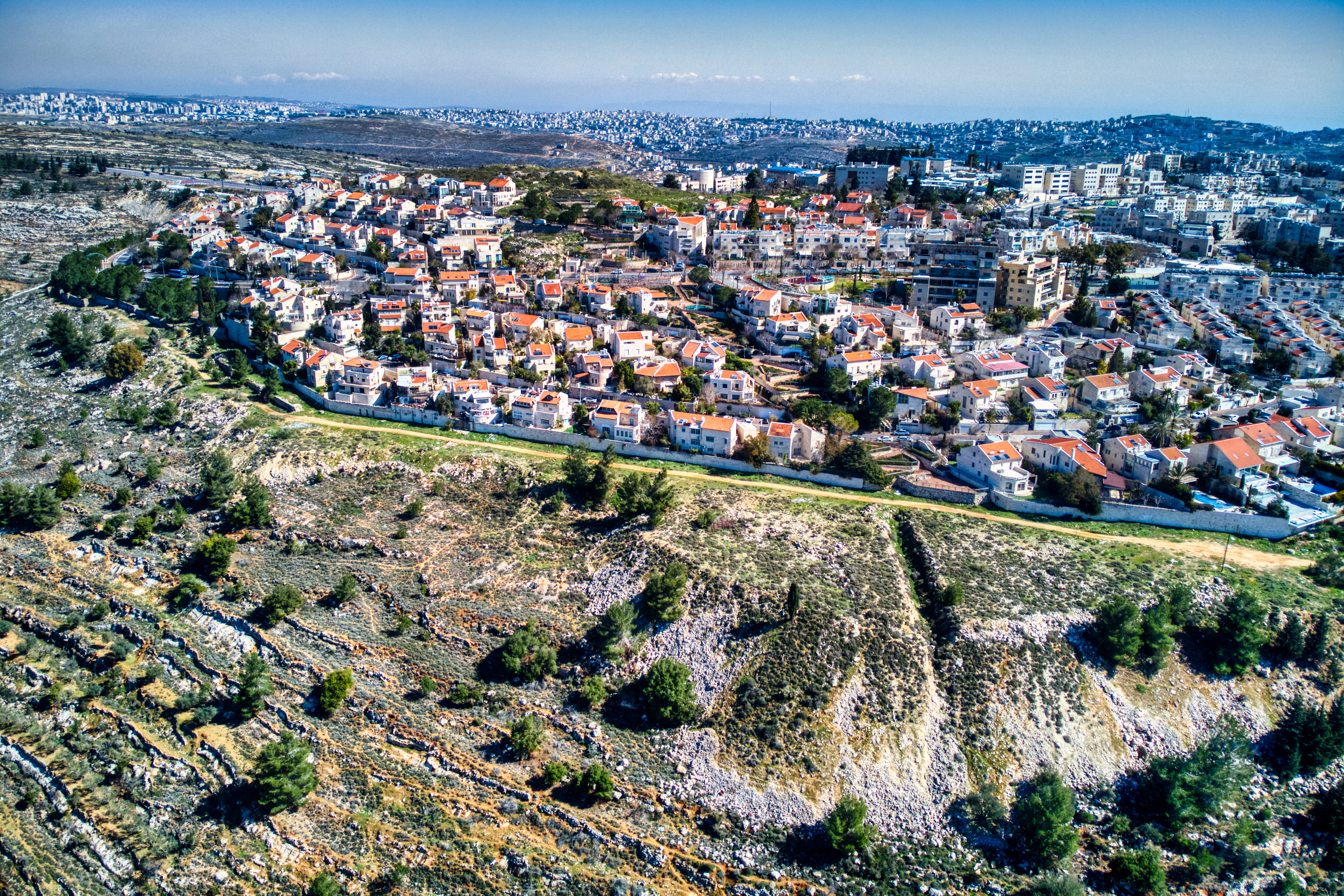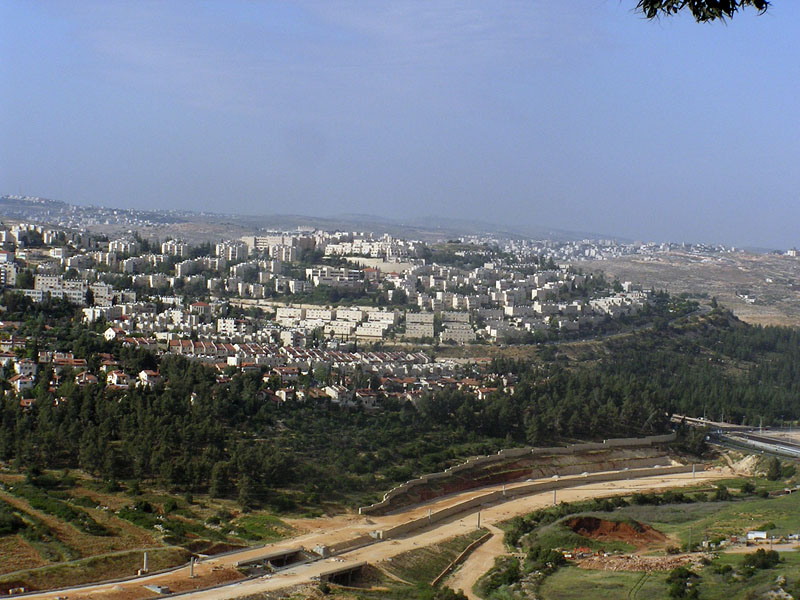|
Yitzhak Shamir Road
Yitzhak Shamir Road () is a section of Highway 1 between the and the . In the past, this section was called Jerusalem Road 9 after the road construction project that was built by Moriah. The section passes through the jurisdiction of the city of Jerusalem. The section of road initially opened in 2007, and includes construction of a bridge to split traffic on highway one to the area of the Moriah Gate Interchange and the construction of two tunnels in Emeq HaArazim. It is 3.6 km long and includes a two-lane tunnel around 400 meters long. ITs construction lasted six years and costed 500 million Israeli shekels ($125 million USD in 2007). The stretch of road allows for passengers from Gush Dan into the northern neighborhoods of Jerusalem and those travelling to the Dead Sea to bypass crowded urban transportation routes, therefore easing congestion at the western entrance to Jerusalem, which was only possible through Sakharov Gardens prior to construction. History The potential r ... [...More Info...] [...Related Items...] OR: [Wikipedia] [Google] [Baidu] |
Jerusalem
Jerusalem (; he, יְרוּשָׁלַיִם ; ar, القُدس ) (combining the Biblical and common usage Arabic names); grc, Ἱερουσαλήμ/Ἰεροσόλυμα, Hierousalḗm/Hierosóluma; hy, Երուսաղեմ, Erusałēm. is a city in Western Asia. Situated on a plateau in the Judaean Mountains between the Mediterranean Sea, Mediterranean and the Dead Sea, it is one of the List of oldest continuously inhabited cities, oldest cities in the world and is considered to be a holy city for the three major Abrahamic religions: Judaism, Christianity, and Islam. Both Israelis and Palestinians claim Jerusalem as their Capital city, capital, as Israel maintains its primary governmental institutions there and the State of Palestine ultimately foresees it as its seat of power. Because of this dispute, Status of Jerusalem, neither claim is widely recognized internationally. Throughout History of Jerusalem, its long history, Jerusalem has been destroyed at least twice, Sie ... [...More Info...] [...Related Items...] OR: [Wikipedia] [Google] [Baidu] |
Ramot, East Jerusalem
Ramot (, ''lit.'' Heights), also known as Ramot Alon (), is an Israeli settlement and neighborhood in East Jerusalem. Ramot was founded in 1974 as one of Jerusalem's so-called " Ring settlements", considered illegal under international law. In 2020, Ramot had a population of 50,400 of which 75% consists of Haredi Jews. History Ramot is named after the biblical city of Rama(h), where the Prophet Samuel lived and was brought for burial: ''Now Samuel had died, and all Israel lamented him, and buried him in Ramah, and (each one lamented him) in his own city. '' (). One tradition associates biblical Rama with one of the highest peaks of the Judean Hills, reaching 885 meters above sea level. The Tomb of Samuel is located 1.3 kilometers north of Ramot, on the lands of the Arab village Nabi Samwil, which has been moved further down the hill but whose mosque is still active in the structure above the tomb. Between the 1949 Armistice Agreements and the Six-Day War in 1967, most of t ... [...More Info...] [...Related Items...] OR: [Wikipedia] [Google] [Baidu] |
2007 Establishments In Israel
7 (seven) is the natural number following 6 and preceding 8. It is the only prime number preceding a cube (algebra), cube. As an early prime number in the series of positive integers, the number seven has greatly symbolic associations in religion, mythology, superstition and philosophy. The seven Classical planets resulted in seven being the number of days in a week. It is often considered lucky in Western culture and is often seen as Symbolism of the Number 7, highly symbolic. Unlike Western culture, in Vietnamese culture, the number seven is sometimes considered unlucky. It is the first natural number whose pronunciation contains more than one syllable. Evolution of the Arabic digit In the Brahmi numerals, beginning, Indians wrote 7 more or less in one stroke as a curve that looks like an uppercase vertically inverted. The western Ghubar Arabs' main contribution was to make the longer line diagonal rather than straight, though they showed some tendencies to making the digit m ... [...More Info...] [...Related Items...] OR: [Wikipedia] [Google] [Baidu] |
Yitzhak Shamir
Yitzhak Shamir ( he, יצחק שמיר, ; born Yitzhak Yezernitsky; October 22, 1915 – June 30, 2012) was an Israeli politician and the seventh Prime Minister of Israel, serving two terms, 1983–1984 and 1986–1992. Before the establishment of the State of Israel, Shamir was a leader of the Zionist paramilitary and terrorist organisation Lehi. After the establishment of the Israeli state he served in the Mossad between 1955 and 1965 and as a Knesset member. He served as the sixth Speaker of the Knesset, and as foreign affairs minister. Shamir was the country's third-longest-serving prime minister, after Benjamin Netanyahu and David Ben-Gurion. Early and personal life Yitzhak Yezernitsky (later Yitzhak Shamir) was born in the predominantly Jewish village of Ruzhany, Grodno province, Russian Empire (now Belarus), which after World War I returned to Poland, as the son of Perla and Shlomo, owner of a leather factory. Shamir later moved to Białystok and studied at a Heb ... [...More Info...] [...Related Items...] OR: [Wikipedia] [Google] [Baidu] |
Society For The Protection Of Nature In Israel
Society for the Protection of Nature in Israel ( he, החברה להגנת הטבע, ''HaHevra LeHaganat HaTeva''), or SPNI, is an Israeli non-profit environmental organization working to preserve plants, animals, and natural environments that represent bio-diversity, by protecting the lands and waters needed for their survival, and is Israel's oldest and largest conservation organization. History SPNI was founded in 1953 by Azaria Alon and Amotz Zahavi in response to plans to drain the Hula Valley. The Israeli government and the JNF ultimately did drain a majority of the Hula wetlands to prevent the spread of malaria and to create agricultural land. After 40 years of SPNI campaigning, some 10% of the Hula wetlands were re-flooded in the early 1990s. In 1980, SPNI, together with Azaria Alon, Amotz Zahavi and Yoav Sagi, was awarded the Israel Prize for its special contribution to society and the State for the environment. Major divisions Best known to the public for sponsoring ... [...More Info...] [...Related Items...] OR: [Wikipedia] [Google] [Baidu] |
Haaretz
''Haaretz'' ( , originally ''Ḥadshot Haaretz'' – , ) is an Israeli newspaper. It was founded in 1918, making it the longest running newspaper currently in print in Israel, and is now published in both Hebrew and English in the Berliner format. The English edition is published and sold together with the ''International New York Times''. Both Hebrew and English editions can be read on the internet. In North America, it is published as a weekly newspaper, combining articles from the Friday edition with a roundup from the rest of the week. It is considered Israel's newspaper of record. It is known for its left-wing and liberal stances on domestic and foreign issues. As of 2022, ''Haaretz'' has the third-largest circulation in Israel. It is widely read by international observers, especially in its English edition, and discussed in the international press. According to the Center for Research Libraries, among Israel's daily newspapers, "''Haaretz'' is considered the most i ... [...More Info...] [...Related Items...] OR: [Wikipedia] [Google] [Baidu] |
Toll Road
A toll road, also known as a turnpike or tollway, is a public or private road (almost always a controlled-access highway in the present day) for which a fee (or '' toll'') is assessed for passage. It is a form of road pricing typically implemented to help recoup the costs of road construction and maintenance. Toll roads have existed in some form since antiquity, with tolls levied on passing travelers on foot, wagon, or horseback; a practice that continued with the automobile, and many modern tollways charge fees for motor vehicles exclusively. The amount of the toll usually varies by vehicle type, weight, or number of axles, with freight trucks often charged higher rates than cars. Tolls are often collected at toll plazas, toll booths, toll houses, toll stations, toll bars, toll barriers, or toll gates. Some toll collection points are automatic, and the user deposits money in a machine which opens the gate once the correct toll has been paid. To cut costs and minimise ti ... [...More Info...] [...Related Items...] OR: [Wikipedia] [Google] [Baidu] |
Globes (newspaper)
''Globes'' ( he, גלובס) is a Hebrew-language daily evening financial newspaper in Israel. Globes was founded in the early 1980s and published in Tel Aviv, Israel. It deals with economic issues and news from the Israeli and international business worlds. The paper is printed on salmon-colored paper, inspired by the British ''Financial Times''. ''Globes'' was one of the first Israeli dailies to publish its contents on the World Wide Web, dating back to April 1995. Its web version publishes in Hebrew and English. According to TGI 2022 media survey, ''Globes'' market share is 4.1% among Israeli financial newspapers. Its main competitors as Israeli financial newspapers in printed media are ''TheMarker'', of the ''Haaretz'' group, and '' Calcalist'', published by the ''Yedioth Ahronoth'' Group. History The daily paper founded by Haim Bar-On, the publisher of the newspaper, on the basis of a small, Haifa-based financial newspaper, in partnership with businessman Eliezer Fishman. ... [...More Info...] [...Related Items...] OR: [Wikipedia] [Google] [Baidu] |
Kol Ha'ir
''Kol Ha'ir'' (, lit ''The Whole City'', also a homophone for ''Voice of the City'') is a weekly local newspaper published in Jerusalem. It is part of the Schocken Books, Schocken Group publishing network. See also *List of Israeli newspapers Publications with year of establishment missing Hebrew-language newspapers Mass media in Jerusalem {{israel-newspaper-stub ... [...More Info...] [...Related Items...] OR: [Wikipedia] [Google] [Baidu] |
Hadashot
''Hadashot'' (, lit. ''News'') was a Hebrew-language daily newspaper published in Israel between 1984 and 1993. History On 4 March 1984 Haaretz Group CEO Amos Schocken announced that a new daily newspaper, ''Hadashot'' was to be launched, with Yossi Klein as editor. It was one of the first Israeli newspapers to use colour printing. The paper was soon hit by a scandal as it published details of the Kav 300 affair in violation of the Israeli Military Censor. Having decided not to join the Editors Committee, ''Hadashot'' published a story stating that an investigative committee had been formed to look into the incident. As a result, the censor closed the paper for three days from 29 April 1984 for not sending the information about the article. Although the paper was cleared of all charges in 1993, the closure damaged the momentum the paper had gained. ''Hadashot'' initially had a young, left-wing, anti-establishment image, and was written in youthful Hebrew, bordering on slang. T ... [...More Info...] [...Related Items...] OR: [Wikipedia] [Google] [Baidu] |
Ramot
Ramot ( he, רָמוֹת, ''lit.'' Heights), also known as Ramot Alon ( he, רמות אלון), is an Israeli settlement and a Jewish neighborhood in the northern part of East Jerusalem. Ramot is one of Jerusalem's so-called " Ring neighborhoods/settlements. The land was annexed by Israel 13 years after the Six-Day War. As part of Ramot was established in East Jerusalem, the international community considers it an Israeli settlement. The international community considers Israeli settlements in East Jerusalem illegal under international law, but the Israeli government disputes this. History Ramot is named after the biblical city of Rama(h), where the Prophet Samuel lived and was brought for burial: ''Now Samuel had died, and all Israel lamented him, and buried him in Ramah, and (each one lamented him) in his own city. '' (). One tradition associates biblical Rama with one of the highest peaks of the Judean Hills, reaching 885 meters above sea level. The Tomb of Samuel is l ... [...More Info...] [...Related Items...] OR: [Wikipedia] [Google] [Baidu] |





_DAILY_OF_THE_EARLY_20S.jpg)

